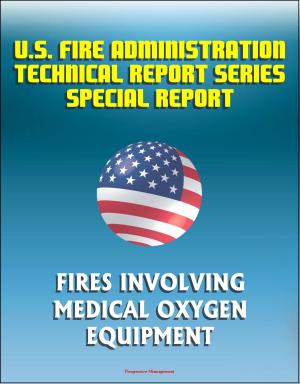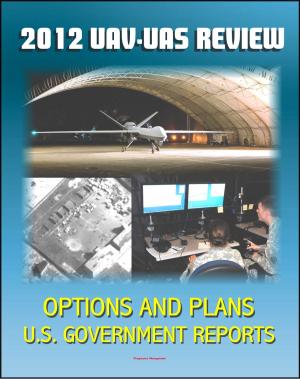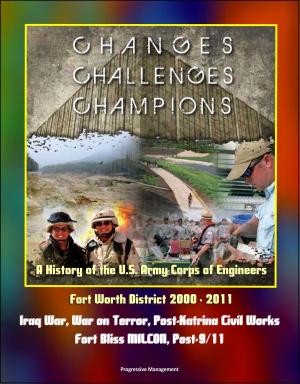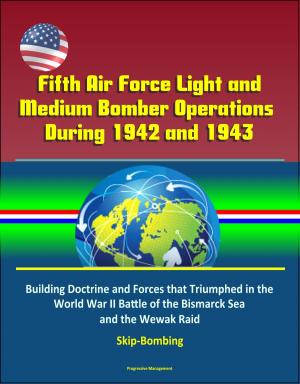Air Power and Warfare: Proceedings of 8th Military History Symposium at U.S. Air Force Academy - Early British, European, American, Soviet, Japanese Experience, World War II, Apollo Astronaut Collins
Nonfiction, History, Military, Aviation, World War II| Author: | Progressive Management | ISBN: | 9781310727467 |
| Publisher: | Progressive Management | Publication: | June 14, 2015 |
| Imprint: | Smashwords Edition | Language: | English |
| Author: | Progressive Management |
| ISBN: | 9781310727467 |
| Publisher: | Progressive Management |
| Publication: | June 14, 2015 |
| Imprint: | Smashwords Edition |
| Language: | English |
Professionally converted for accurate flowing-text e-book format reproduction, this unique USAF publication provides the proceedings of the eighth military history symposium at the U.S. Air Force Academy covering the earliest years of air power and World War II in the air.
CHAPTER I - The State of Air Power History * CHAPTER II - Air Power and Warfare, 1903-1941 * CHAPTER III - World War II in the Air: Different National Experiences * CHAPTER IV - World War II: American Air Leadership * CHAPTER V - The Search for Maturity in American Postwar Air Doctrine and Organization, 1945-1953 * CHAPTER VI - Air Power Limits in Limited War, 1947-1978 * CHAPTER VII - A Major Pioneer Looks at Air Power * CHAPTER VIII - Insights into Technology and Air Warfare: Past, Present, Future * CHAPTER IX - The Eighth Military History Symposium in Perspective
The co-sponsor of this symposium series, the Department of History at the U.S. Air Force Academy, has had a special commitment since its inception in 1954 to the teaching of the history of air power. For many years, however, the very limited amount of scholarly work in this field has hampered the effective teaching of the subject at the Academy and elsewhere and stymied proposals to present a symposium on the topic. Then, as the 75th Anniversary of the Wright Brothers' flight approached, scholarly efforts began to increase. Enough American and foreign scholars, both civilian and military, and some of the surviving shapers of the history of air power could now be brought together at least, as a minimum, to assess what has been done and to stimulate new work. In the event, the contributors to this volume have gone well beyond the minimum by providing herein a collection of essays, commentaries, and reminiscences that should enhance both the teaching and the public understanding of the record and potential of air power. Furthermore, future researchers and writers will appreciate the conscientious work of scholarly commentators who responded especially well to the invitation to identify the work yet to be done.
The symposium committee structured this event so as to deal with the topic within as broad a framework as a two-day meeting would permit. Thus, the sweep of the papers extends chronologically from a study of British views on air power even before 1903 through a major pioneer's perceptions of the future role of air power in the defense of the United States and its allies. Geographically, the participants on the program addressed the air power record on three continents, specifically dealing with the experiences of six nations. To make the most of the available time, the planners began the symposium with an evening lecture and experimented with simultaneous sessions during the next two days. While there was the inevitable disappointment among our more than 250 attendees from outside the Academy, as well as among the members of the Academy community, at not being able to hear each of the speakers, the editors believe that these published proceedings will justify the experiment. In addition, they sought to round out these proceedings by inviting comments from individuals not on the program about topics a volume such as this should at least mention.
Professionally converted for accurate flowing-text e-book format reproduction, this unique USAF publication provides the proceedings of the eighth military history symposium at the U.S. Air Force Academy covering the earliest years of air power and World War II in the air.
CHAPTER I - The State of Air Power History * CHAPTER II - Air Power and Warfare, 1903-1941 * CHAPTER III - World War II in the Air: Different National Experiences * CHAPTER IV - World War II: American Air Leadership * CHAPTER V - The Search for Maturity in American Postwar Air Doctrine and Organization, 1945-1953 * CHAPTER VI - Air Power Limits in Limited War, 1947-1978 * CHAPTER VII - A Major Pioneer Looks at Air Power * CHAPTER VIII - Insights into Technology and Air Warfare: Past, Present, Future * CHAPTER IX - The Eighth Military History Symposium in Perspective
The co-sponsor of this symposium series, the Department of History at the U.S. Air Force Academy, has had a special commitment since its inception in 1954 to the teaching of the history of air power. For many years, however, the very limited amount of scholarly work in this field has hampered the effective teaching of the subject at the Academy and elsewhere and stymied proposals to present a symposium on the topic. Then, as the 75th Anniversary of the Wright Brothers' flight approached, scholarly efforts began to increase. Enough American and foreign scholars, both civilian and military, and some of the surviving shapers of the history of air power could now be brought together at least, as a minimum, to assess what has been done and to stimulate new work. In the event, the contributors to this volume have gone well beyond the minimum by providing herein a collection of essays, commentaries, and reminiscences that should enhance both the teaching and the public understanding of the record and potential of air power. Furthermore, future researchers and writers will appreciate the conscientious work of scholarly commentators who responded especially well to the invitation to identify the work yet to be done.
The symposium committee structured this event so as to deal with the topic within as broad a framework as a two-day meeting would permit. Thus, the sweep of the papers extends chronologically from a study of British views on air power even before 1903 through a major pioneer's perceptions of the future role of air power in the defense of the United States and its allies. Geographically, the participants on the program addressed the air power record on three continents, specifically dealing with the experiences of six nations. To make the most of the available time, the planners began the symposium with an evening lecture and experimented with simultaneous sessions during the next two days. While there was the inevitable disappointment among our more than 250 attendees from outside the Academy, as well as among the members of the Academy community, at not being able to hear each of the speakers, the editors believe that these published proceedings will justify the experiment. In addition, they sought to round out these proceedings by inviting comments from individuals not on the program about topics a volume such as this should at least mention.















